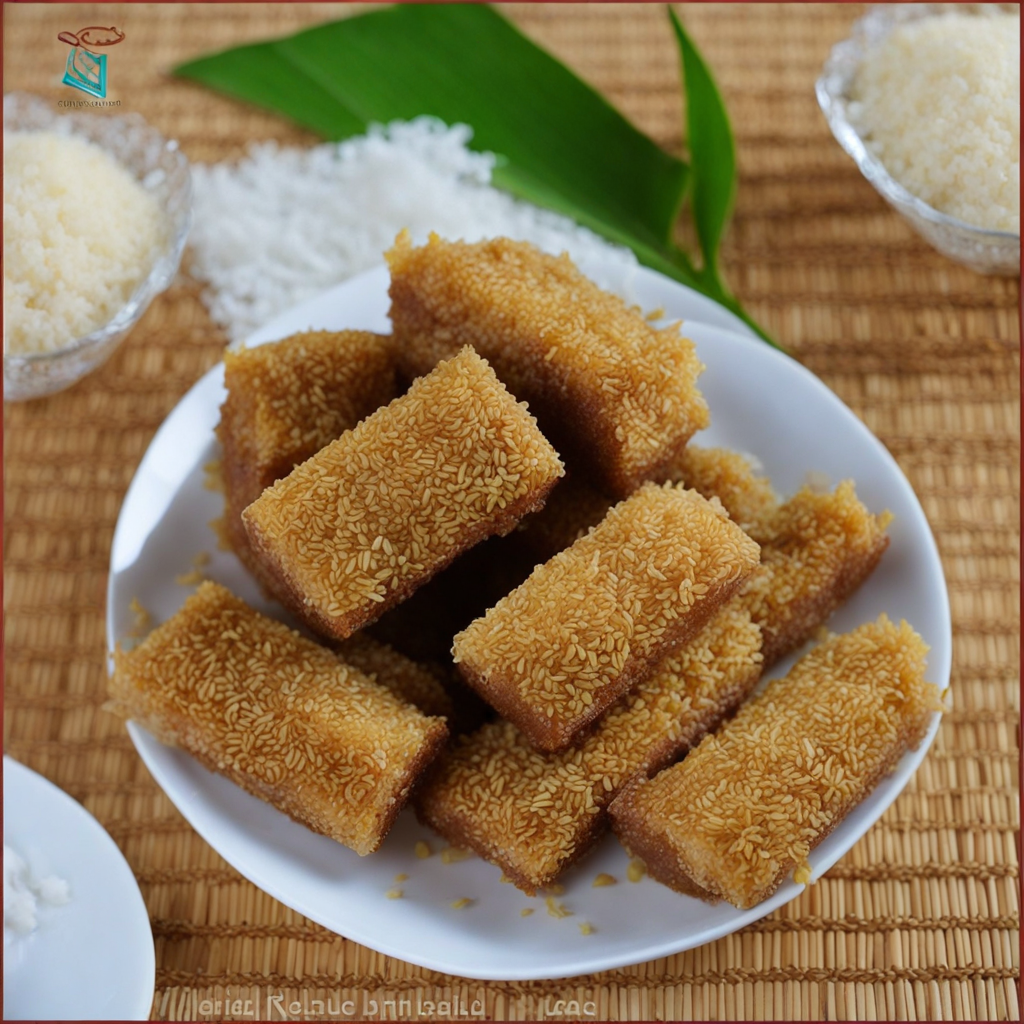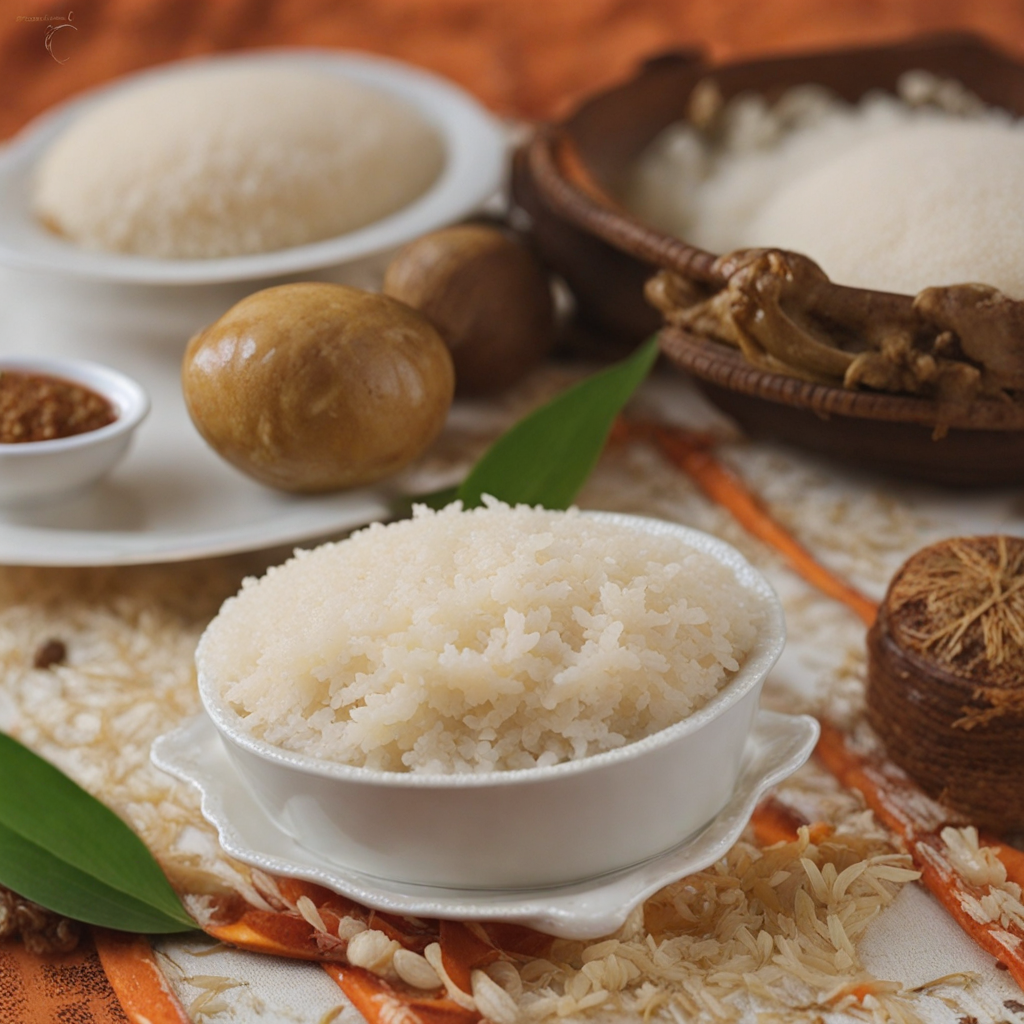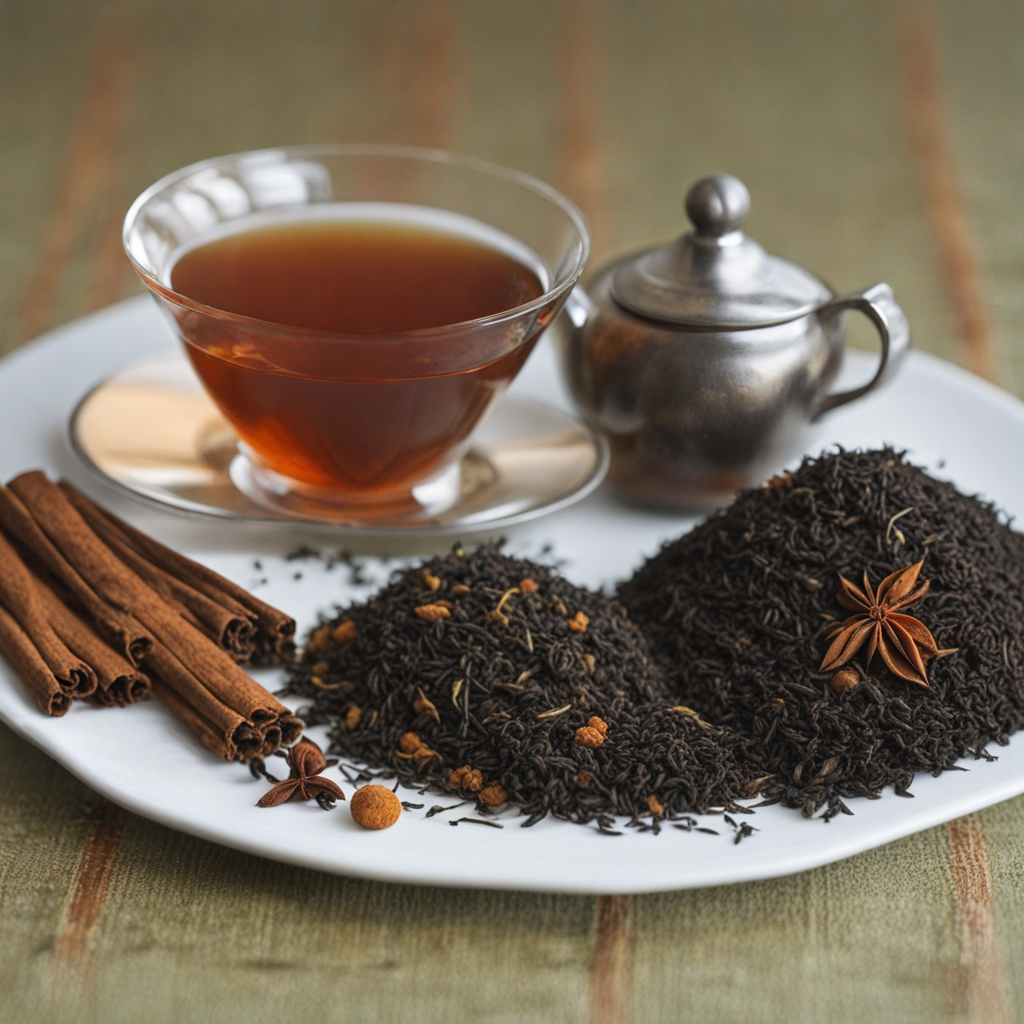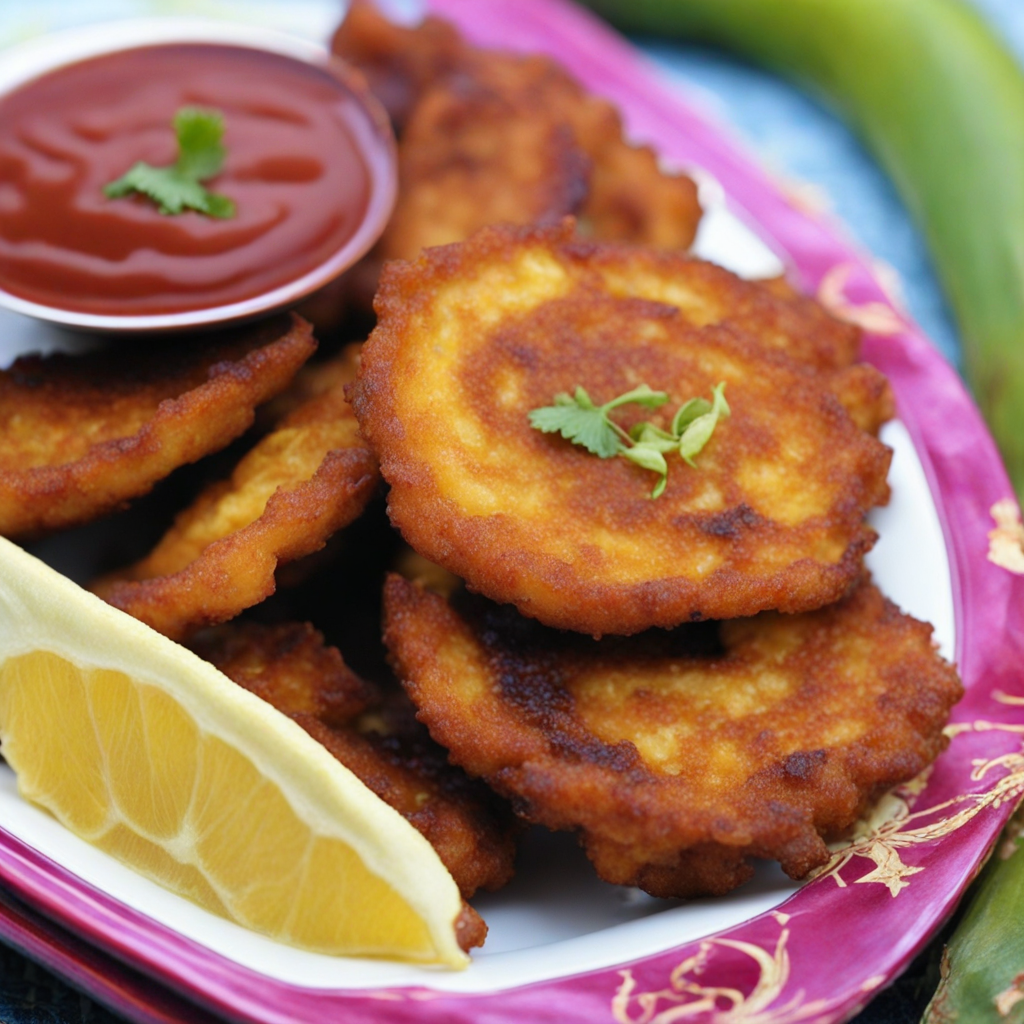Ladu
Ladu is a delightful treat that hails from the stunning archipelago of Comoros, where vibrant flavors and diverse culinary traditions come together. This sweet delicacy is typically made from a base of glutinous rice flour, which is steamed to create a chewy and slightly sticky texture that melts in your mouth. The dough is often infused with fragrant coconut, giving it a tropical essence that transports you straight to the sun-kissed shores of the islands. The sweetness is balanced with a hint of cardamom, making each bite an aromatic experience that dances on your palate. Traditionally, Ladu may be filled with a variety of fillings, such as sweetened grated coconut or rich, spiced nuts, adding complexity and depth to this seemingly simple treat. The fillings often vary by region and family recipe, showcasing the creativity and resourcefulness of Comorian cooks. Some versions are even adorned with colorful sprinkles or a dusting of powdered sugar, making them not just delicious but visually appealing as well. The dish is often enjoyed during celebrations and gatherings, where the communal act of sharing food is a cherished part of the culture. Eating Ladu is more than just savoring a treat; it’s about experiencing the warmth of Comorian hospitality and the island's rich heritage. Whether enjoyed as a snack with tea or as a sweet ending to a meal, Ladu offers a unique taste of Comoros that reflects the island's natural bounty and culinary artistry. Each bite invites you to explore the lush landscapes and vibrant traditions of this enchanting destination, making it a must-try for anyone looking to broaden their culinary horizons.
How It Became This Dish
The Ladu: A Culinary Jewel of Comoros The Comoros, an archipelago nestled in the Indian Ocean between Madagascar and the African mainland, is often referred to as the "perfumed islands" due to its rich biodiversity and aromatic spices. Among its vibrant culinary offerings, Ladu stands out as a cherished treat, combining both cultural significance and historical depth. To understand Ladu is to embark on a journey through the islands’ multifaceted identity, influenced by indigenous traditions, Arabic and Swahili heritage, and colonial legacies. #### Origins The origins of Ladu are tightly woven with the history and culture of the Comoros. While the exact timeline of its inception remains elusive, it is believed that Ladu emerged in the 19th century, influenced by the diverse culinary practices brought to the islands through trade and migration. The Comoros has long been a melting pot of cultures, a crossroads for Arab, African, Persian, and European traders. This cultural exchange introduced a variety of ingredients and cooking methods that shaped the local cuisine, including sweets and desserts. Ladu, in its basic form, is a sweet made from flour, sugar, and a range of spices, often infused with coconut, which is abundant in the region. The use of coconut reflects the islands’ tropical climate and the importance of this fruit in local life—not just as a food source but also in rituals and daily practices. The preparation of Ladu showcases the region’s agricultural wealth, making use of local staples that are both flavorful and symbolic. #### Cultural Significance Ladu is more than just a sweet treat; it occupies a special place in the cultural fabric of Comorian society. It is frequently prepared during festive occasions, weddings, and religious celebrations, symbolizing joy and prosperity. The act of making Ladu is often a communal affair, bringing families together in the kitchen, fostering a sense of unity and shared heritage. Traditionally, women would gather to prepare large batches, passing down recipes and techniques from one generation to the next, thus preserving the culinary knowledge of their ancestors. In Comorian culture, food is an integral part of social interaction and expression. Sharing Ladu with guests is seen as a gesture of hospitality, embodying the islanders' warmth and friendliness. The preparation and presentation of Ladu often involve elaborate rituals, highlighting its significance beyond mere consumption. This practice connects the community to its roots, emphasizing the values of togetherness, generosity, and respect for tradition. #### Development Over Time As the Comoros has evolved, so too has Ladu. The 20th century brought significant changes with the influx of new ingredients and cooking techniques, influenced by globalization and the diaspora of Comorians to various parts of the world. This exposure allowed for a fusion of flavors, as Ladu began to incorporate elements from other culinary traditions. Contemporary versions might include variations with different types of nuts, dried fruits, or even chocolate—an ingredient that was not traditionally present but has found its way into many modern recipes. The globalization of food culture has also seen Ladu being embraced beyond the shores of the Comoros. As Comorian communities have settled in various countries, particularly in France, the beloved sweet has made its way into the broader culinary landscape. Food festivals, cultural events, and community gatherings have become platforms for showcasing Ladu, allowing it to gain recognition and appreciation outside its native context. Social media has played a pivotal role in the modern development of Ladu, with food enthusiasts and home cooks sharing vibrant images and recipes online. This visibility has sparked interest in Comorian cuisine, prompting a revival of traditional dishes and encouraging younger generations to reconnect with their culinary heritage. As a result, Ladu is not merely a remnant of the past but a living, evolving symbol of Comorian identity. #### Ingredients and Preparation The traditional Ladu recipe varies from family to family, but it typically includes a base of flour, sugar, and fat—often ghee or coconut oil—combined with various spices such as cardamom and nutmeg. Coconut, both fresh and desiccated, is a common ingredient, adding moisture and flavor. Some recipes also incorporate rice flour, giving the Ladu a distinct texture. The preparation process is as significant as the ingredients themselves. The dough is mixed, shaped into small balls, and often rolled in extra coconut or nuts before being lightly fried or baked. The cooking method can vary, with some preferring a crunchy exterior while others may opt for a softer, cake-like texture. #### Conclusion Ladu is emblematic of the Comoros’ rich cultural tapestry, embodying the islands’ history, traditions, and evolving identity. It tells a story of resilience and adaptation, reflecting the interplay of indigenous practices and external influences over centuries. As it continues to be made, shared, and celebrated, Ladu serves as a reminder of the importance of food as a vessel for culture, community, and connection. Each bite encapsulates the spirit of the Comorian people, their heritage, and their journey—a true culinary jewel of the Indian Ocean. In a world increasingly connected yet often fragmented, Ladu stands as a delicious testament to the power of food to unite, celebrate, and preserve the essence of a culture.
You may like
Discover local flavors from Comoros







